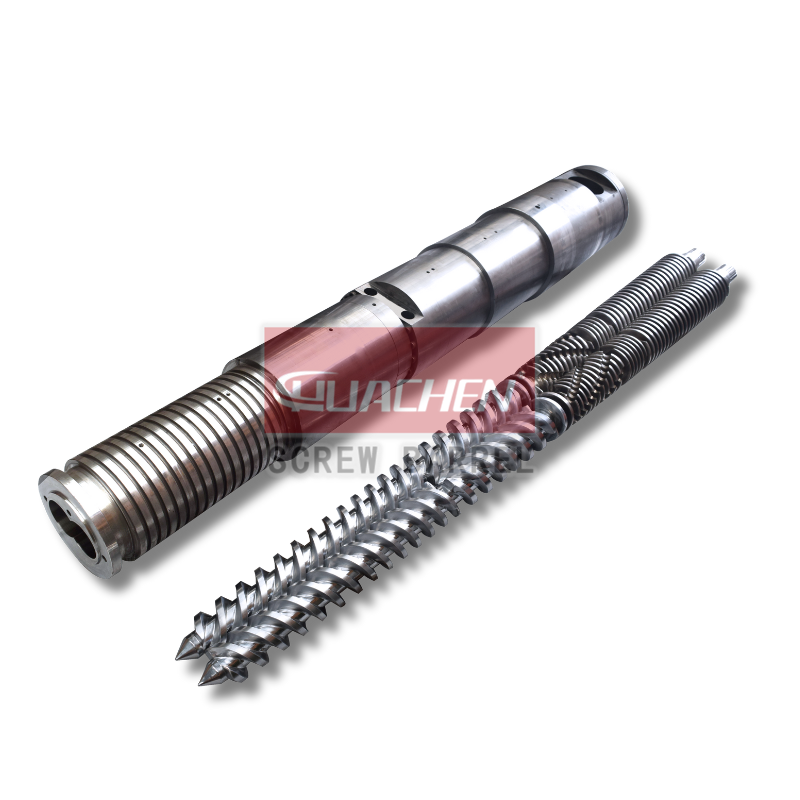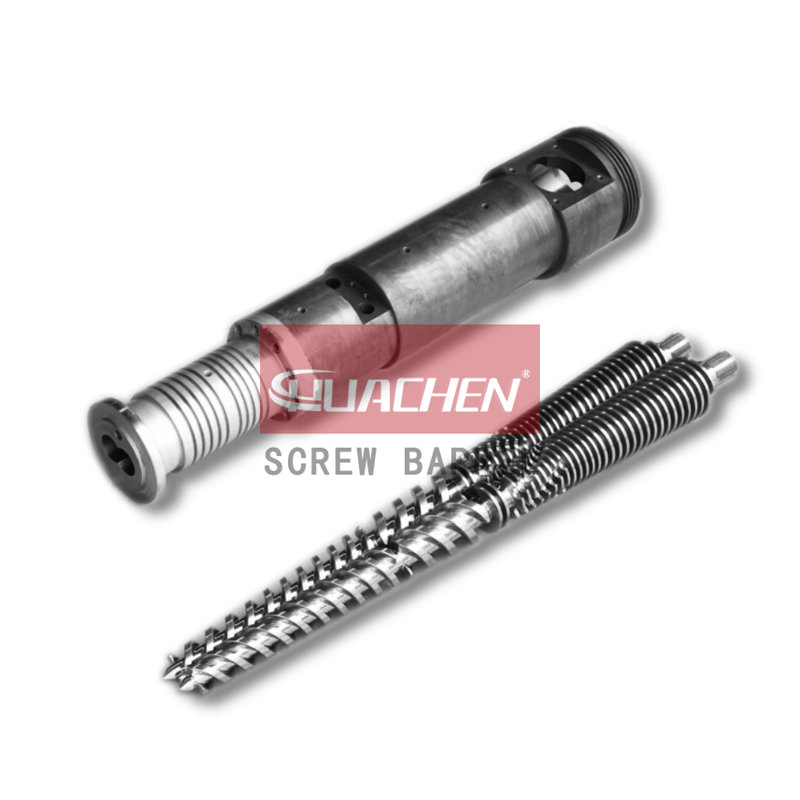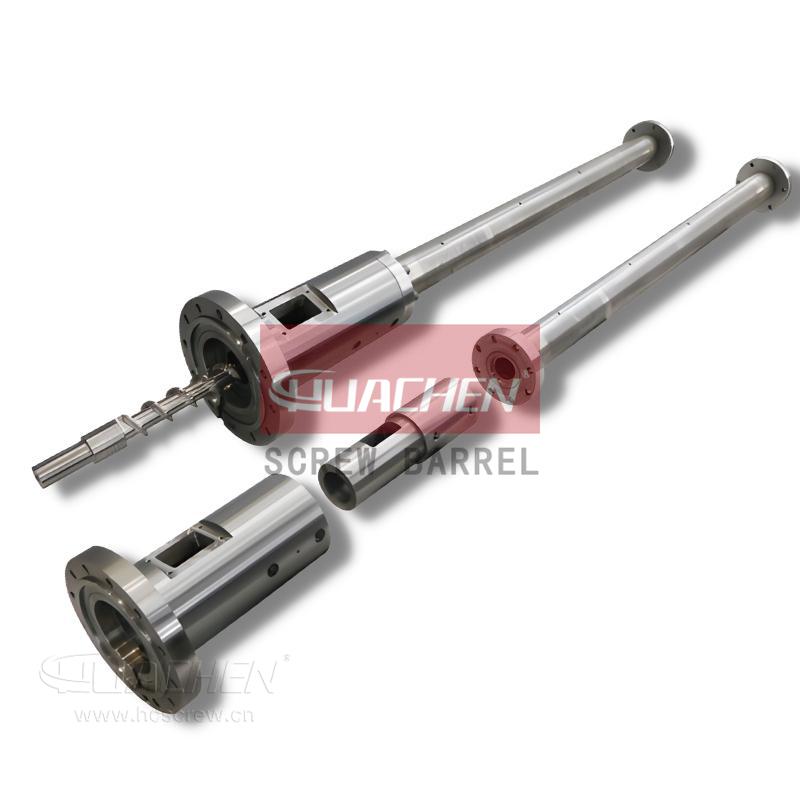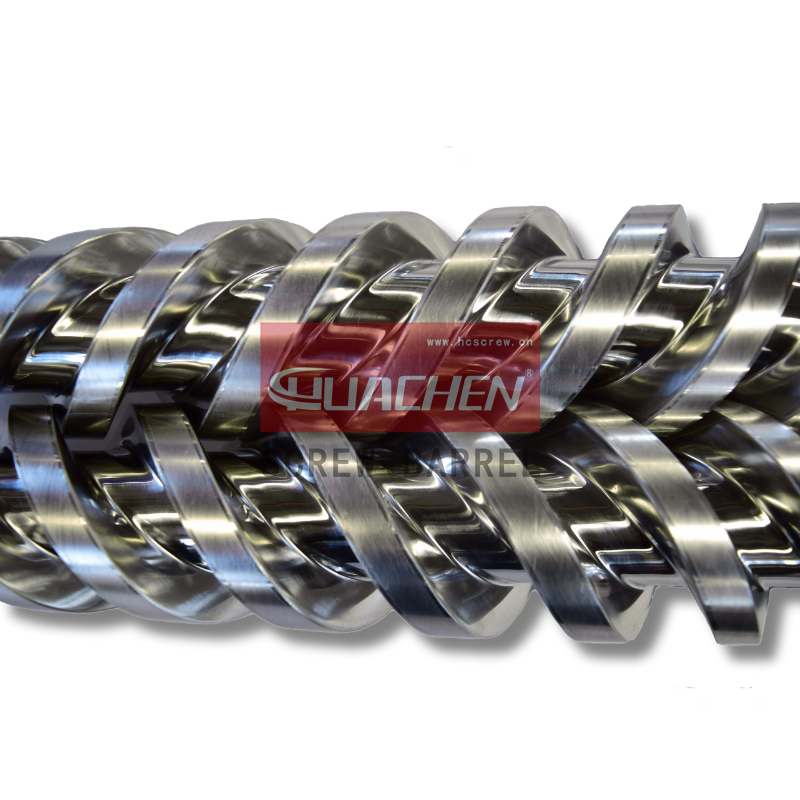Optimize Your PVC Extrusion Process With Conical Twin Screw Barrel
Date:2023-2-15 Author:hcscrew
Learn how to enhance your PVC extrusion process by using conical twin screw barrel. This guide will provide you with a detailed understanding of the structure, extrusion process, and role of the converging die and die dead in ensuring high-quality products.
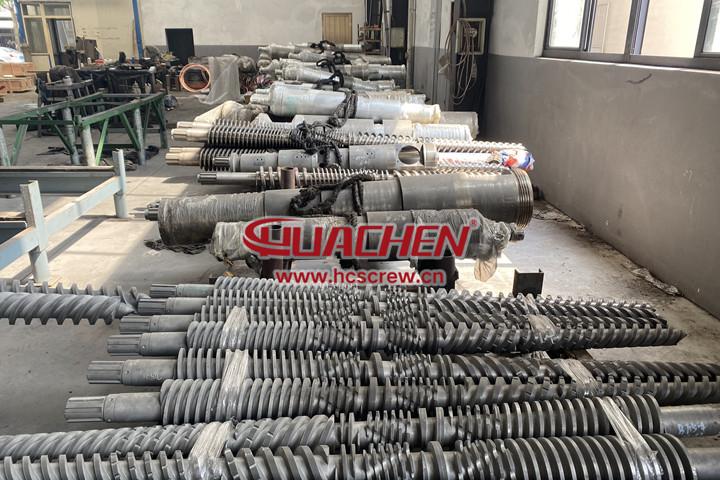
01 Understanding the structure and extrusion process of conical twin screw barrel
1.1 Conical twin screw extruder
The conical twin screw extruder consists of an electric motor (drive unit), a reduction box (reducer), a distribution box, a barrel, a screw (the barrel screw is a part of the barrel), a heating and cooling unit, and an electric control unit. It is the barrel and screw that form the core of the extruder structure, while the other devices are auxiliary, but without them the extruder could not function. These devices have fixed wear parts. The feeder and dry powder blend will push material through the barrel of the trough at a certain speed.
1.2 Exploring the vital role of each department in conical twin screw barrel
The first zone (preplasticization zone):
It is the most important area for electric control in the entire extruder. It performs tasks such as heating and extruding.
1) Dry powder compaction, shearing, and quantitative forward transport
2) Pre-plasticization in advance, if the first zone is not pre-plasticized, the whole machine will not plasticize, and the first zone of the extruder (excluding the die) has the highest temperature.
This will result in the following situations if the first zone does not reach preplasticisation.
1) Material bubbles out of the venting hole of the extruder.
2) The current increases significantly.
3) The product is very brittle.
The second zone (plasticizing zone):
in this zone, the dry powder material passed through the first zone has been compacted by pre-plasticizing the material. The compacted block is then advanced to the second zone by rotation of the screw. In the second zone, the screw bell’s structure changes, it becomes 4 to 5 mm thick, it spirals 9 to 11 turns, and it is broken into two ends. Therefore, the second zone achieves the standard 90% plasticization degree. Due to this, the second zone has reached 90% of the standard level of plasticization. As long as there are still many grooves inside the spiral bell, mixing is achieved, and more than 90% of plasticization has been achieved in the second zone. The second zone will be adversely affected if the first zone does not reach preplasticization.
1) There is no plasticization in the dry powder material.
2) Squeezing out a spiral. Depending on the extruder’s plasticizing ability, the temperature of the second zone should be set 1 to 2°C lower than the first zone.
Third zone (homogenizing zone):
This zone is responsible for plasticizing the materials that are not completely plasticized in the second zone, and it should ensure that plasticization reaches 100%. It is also important that the temperature in the three zones of the extruder be lower than the temperature in the second zone by 5 to 6 °C. This is not more than 8 °C, since the barrel screw is made of alloy steel, rigid materials have thermal conductivity, so the temperature step difference is not significant.
Four zones (quantitative conveying extrusion zone):
if the material has been plasticized quite well, this zone can be seen with the screw floating in the middle of the extruder barrel on rotation. It is the four zones of the extruder that transport the plasticised melt quantitatively forward, and if they become plasticising zones, the extruder will suffer.
The temperature difference between the four zones should be about 5 to 6°C, and the maximum should not exceed 8°C between the three zones. From the above point of view, the extruder temperature is from high to low, the temperature of one zone is the highest, and definitely not allowed to be flat or from low to high. However, the temperature difference between one zone and four zones should not exceed 20°C in general.
02 Understanding the vital role of the Converging die
1) conical twin screw extrusion of molten material to merge or fuse.
2) A fine adjustment device for the degree of plasticization.
3) The sensor of the converging die can measure melt pressure and melt temperature. The function of the fine adjustment device for the plasticising degree: the plasticising degree can be adjusted by lowering or raising the temperature of the converging die without taking into account other problems of the extruder when the plasticising degree is too low or too high. Plasticity increases when the core temperature is lowered and decreases when the core temperature is raised. For example, if the temperature of the four zones of the extruder is 170°C, the temperature of the converging die can be 160°C or 180°C. Converging die temperatures cannot be more than 10°C higher or lower than those of the four zones. Accordingly, the converging die’s temperature should be adjusted up and down within 10°C.
03 Converging die temperature and plasticisation
There is a relationship between the temperature of the converging die and the degree of plasticisation. According to our studies, when the temperature of the converging die is lowered, plasticity increases, and when the temperature is raised, plasticity decreases.
Using PVC square pipe as an example, there are four heating zones. By adding heating to the left side of the flow, fluidity immediately increases. The more you heat the object, the faster it flows and the more it extrudes. Since there is no resistance, the flow is faster, so the material can be extruded smoothly. A fully open valve allows melt to flow smoothly downward. Melt does not flow or flows very slowly when the valve is partially open or fully closed. When the temperature is low, it is like closing a valve for a while, so we will use the converging die as a valve for melting.
The temperature of the converging die can be adjusted in order to achieve a certain degree of plasticization. The plasticization it can improve is not complete, however. Malplasticisation does not mean that there is no plasticization, it means that certain defects are present. The temperature of the converging die can be lowered when there is a plasticization defect. When the temperature is lowered, we can see if the plasticisation is better and the material melts more slowly. In this case, pressure is generated inside the core, which results in an increase in plasticisation.
04 Plasticity of PVC products and processing
4.1 The effect of plasticization degree on product performance.
Depending on the degree of plasticization, PVC products perform differently. Too much plasticization results in yellow lines on the product and unqualified mechanical properties. The product will be brittle if the degree of plasticization is too low.
1) The highest tensile strength occurs when the degree of plasticisation is 60%.
2) the highest impact strength when the degree of plasticisation is 65%.
3) the highest elongation at break when the degree of plasticisation is 70%.
For the production of pipes for water supply a plasticisation of 60-65% is most appropriate. This is because within this range it reflects both tensile and impact strength properties.
4.2 Effect of temperature on plasticisation.
Polymer materials, less than 80 °C, cannot melt, melt glassy, or become rigid and brittle. When the material is at 160 °C, it is in a very high elastomeric state. However, in the region of the material where the material cannot flow, it becomes softer and the viscoelasticity increases. When melting PVC, and there is liquidity in the PVC, the temperature should be between 160°C and 200°C, but any stabilizer decomposes at higher temperatures. The PVC temperature should be between 170°C and 180°C in this 40°C temperature range for best plasticization.
4.3 Ways to improve plasticisation.
1) Replace the existing screw with one that has a high plasticizing design.
2) By raising the temperature of the barrel and screw.
3) Increase feeder feeding speed to improve plasticisation when screw speed is normal.
4) Speed up the extruder once the feed is satisfied and the extruder is rated.
5) Allow the dry powder to mature for 12 to 48 hours (h).
4.4 The role of the maturation period is to:
a. Eliminate static electricity and reduce pollution
b. Increased apparent density
c. Improve plasticisation
d. low molecular polymerisation dispersion uniformity, prevent extrusion instability
e. by reducing the temperature of the converging die to improve the degree of partial plasticization.
4.5 How to judge the degree of plasticity?
1) Using the host current (for example, on a 65/132 extruder production line, the host current should be 46 – 52A, and if producing a low calcium product, the host current should be 45-50A. It is necessary to have a screw speed of 16-22 r/min, an appropriate screw speed, a temperature setting that matches the screw speed, and the appropriate host current.
2) Through the vacuum vent of the mainframe, observation of plasticisation of the material is possible. This screw groove has more than 60% of the material in the middle. The powder is in a state of tofu slag while the bottom part is flattened.
3) Determine the degree of plasticisation by measuring the viscoelasticity of the molten material in the mouth mould (this method is more applicable when the machine is first started).
4) Determine the degree of plasticisation by measuring the melt pressure and melt temperature of the converging die (although if the meter fails or if the converging die sensor becomes gummed up by scorched material, accuracy may be compromised).
05 PVC raw material composition and function
Increase viscoelasticity and strength of PVC melt by decreasing viscosity, promoting plasticization, increasing fluidity, and increasing plasticization. Screws with more than 6 parts calcium cannot plasticize and must be processed with better processing aids to compensate for equipment defects.
5.1 ACR:
Classification of processing aids: (national standard regulations)
ACR201: methyl methacrylate (85%) + ethyl or butyl acrylate (15%)
ACR301: methyl methacrylate (80%) + ethyl or butyl acrylate (10%) + styrene (10%)
ACR401: methyl methacrylate (50%) + ethyl or butyl acrylate (10%) + styrene (25%) + acrylic acid (15%)
5.2 Impact modifiers:
CPE is the abbreviation for chlorinated polyethylene. Chlorinated polyethylene (CPE), obtained by heating high-density polyethylene in an aqueous phase reaction and then passing chlorine, contains 35% chlorine for better impact resistance and improved compatibility with PVC, and its addition is generally 7-8 parts.
5.3 Stabilizers:
Stabilizers are used to prevent or alleviate the decomposition of PVC. For example, calcium and zinc stabilisers are widely used in PVC soft, hard, transparent and non-transparent products. It is a non-toxic and environmentally friendly stabiliser made from fatty acid salts as the main metal soap, supplemented by polyols, B-diketones, phosphite, antioxidants and other co-stabilisers and lubricants.
In conclusion
The above briefly describes the PVC product production process using twin screw extruders, along with the main technical difficulties. Conical twin-screw barrels are a key component of the extrusion process, along with other components. As well as other parts that work together to produce high quality PVC products, the conical twin screw barrel is a key component of the extrusion process. To find out more about the latest offers and technical support for PVC conical twin screw barrels, please contact HUACHEN screw.
About the twin screw barrel Factory: HUACHEN
HUACHEN Screw has been a leading conical twin screw barrel manufacturer in Zhoushan Jintang since 1993. As one of the leading companies in designing and processing parallel and conical twin screw extrusion screw barrel, HUACHEN Screw can provide its customers with a wide range of services, including drawing rebuilding, design, modification, and customized screw barrels. Our company has also successfully exported and supplied screw barrels to customers worldwide.
>>Learn more about our company
You May Also Like
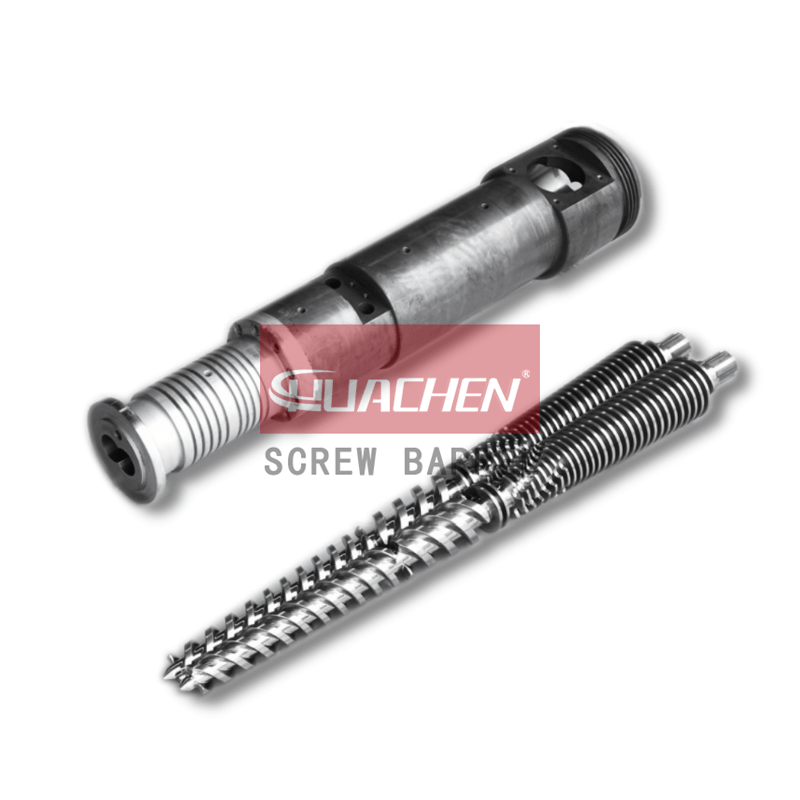 | PVC Pipe Conical Twin Screw Barrel ↗ Get PVC pipe conical twin screw barrel details and prices from HUACHEN screw barrel factory. Good plasticisation, heavy duty screw barrel. |
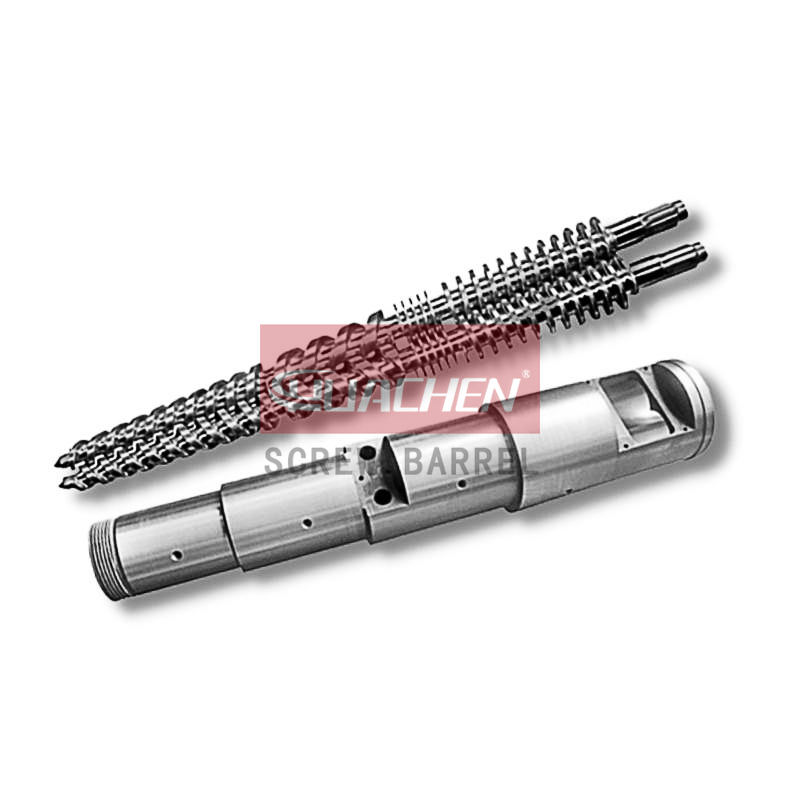 | Conical Twin Screw Barrel ↗ Get latest & most competitive prices on China conical twin screw barrel, extruder barrels, extruder screw, bimetallic screw, SKD barrels… |
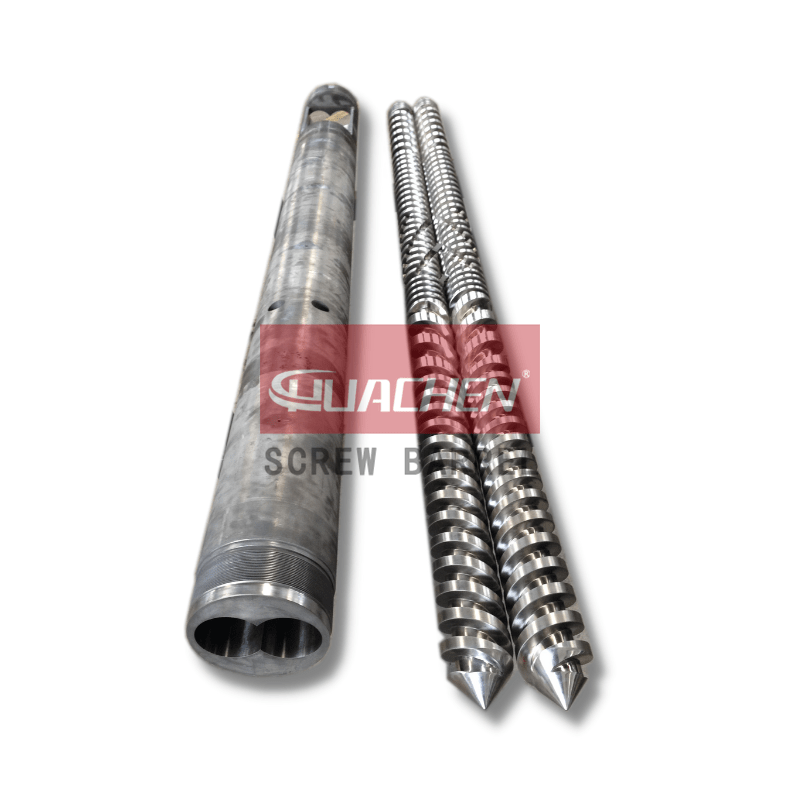 | Twin Screw Barrel ↗ Get latest good prices on China twin screw barrel, parallel conical twin screw barrel. Advantages, comparisons, materials, models… |
TAGS
HUACHEN Screw barrel recent post
- High-performance PVC Screw Barrel for Efficient Extrusion
- Durable Conical Twin Screw Barrel for Precision PVC Pipe Production
- High-Speed Screw Barrel for Increased Extrusion Efficiency
- Super Wear-Resistant Bimetallic Alloy Coating Screw Barrel for High Output Extruders
- High-Precision Parallel Twin Screw Barrel for Extrusion Excellence
- Top Quality Single Screw Barrels for Plastic Extrusion Applications
- High-quality Extruder Screw Barrel for Reliable Performance
- Efficient Plastic Extrusion Screw Barrel for Superior Output
conical twin screw barrel extruder screw barrel extrusion screw barrel Foam sheet processing high speed screw barrel HUACHEN SCREW news injection screw barrel parallel twin screw barrel pa screw barrel pe making formula pe screw barrel plastic fiber processing plastic fibre screw barrel Plastic film making screw barrel plastic pipe processing Plastic profile processing Plastic raw material knowledge pp screw barrel PVC making formula pvc screw barrel related parts for screw barrel screw barrel engineering work screw barrel knowledge single screw barrel twin screw barrel
;